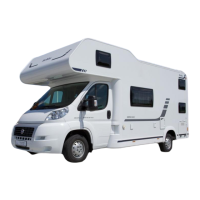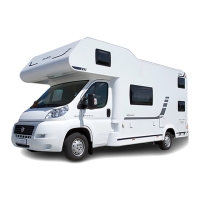03-12
If you are not sure whether you have
overloaded the vehicle, weigh your
vehicle on a public vehicle scale.
Overloading can lead to malfunction
or even tire blowout!
This presents the danger of the
vehicle spinning out of control, which
endangers you as well as other dri-
vers and pedestrians.
2. Mass in running order
The mass in running order corrsponds to the
weight of the standard vehicle including all
standard equipment installed at the factory (e.g.
all-inclusive package) plus the basic equipment
(see Item 3).
3. Basic equipment
The basic equipment consists of all objects and
uids which are necessary for the safe and pro-
per use of the vehicle. These include the masses
for gas, water and electrical supply (see Item
13.3 for a detailed specication).
4. Additional load
The additional load is the difference between
the "gross vehicle weight rating minus the mass
in running order". The remaining additional load
must be large enough to cover the weights of
possible additional equipment and personal
equipment.
5. Additional equipment
Additional equipment includes all items not
part of the standard equipment preinstalled in
the HOBBY factory or by the dealer. This also
includes installations by special request.
The mass in running order refers to the vehicle
as originally equipped by the dealer or factory.
This increases accordingly if special equipment
is installed.
Before the rst use, we recommend that you
weigh your vehicle on a calibrated vehicle scale.
In this manner, you can determine the maximum
permissible additional load for your vehicle.

